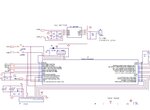ChansAlive
Member level 3
Hi
Thanks for the reply...
Now I'm using dsPIC33FJ64GP802 with MCP2551 transciever. But later I will port to dsPIC33EP32GP503.
Thanks for the reply...
Now I'm using dsPIC33FJ64GP802 with MCP2551 transciever. But later I will port to dsPIC33EP32GP503.
